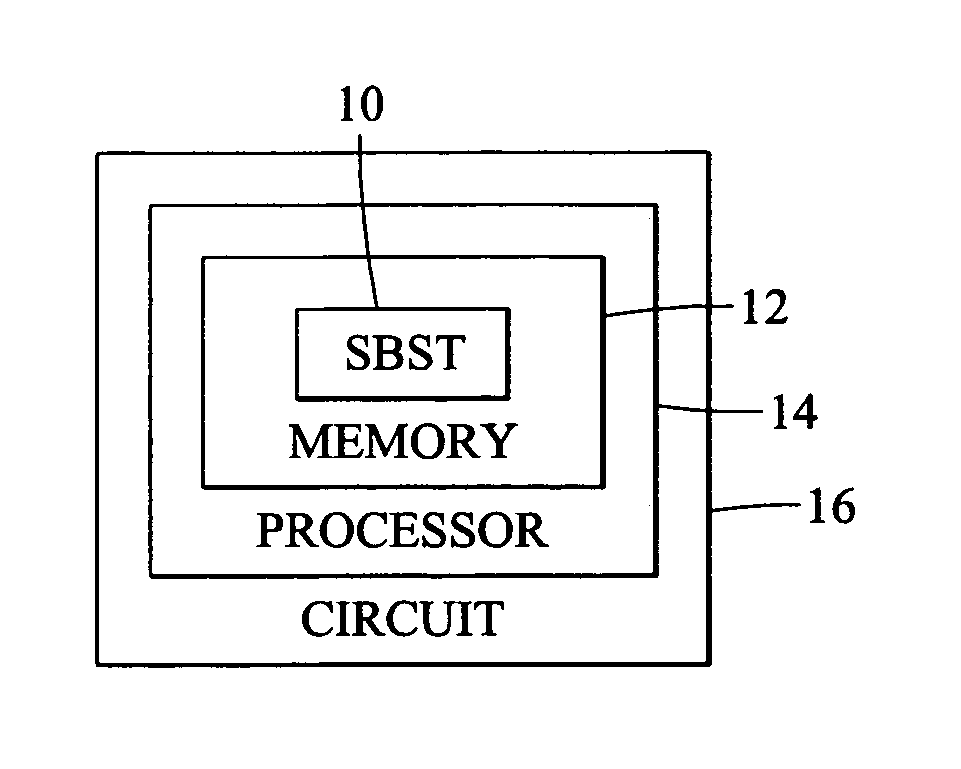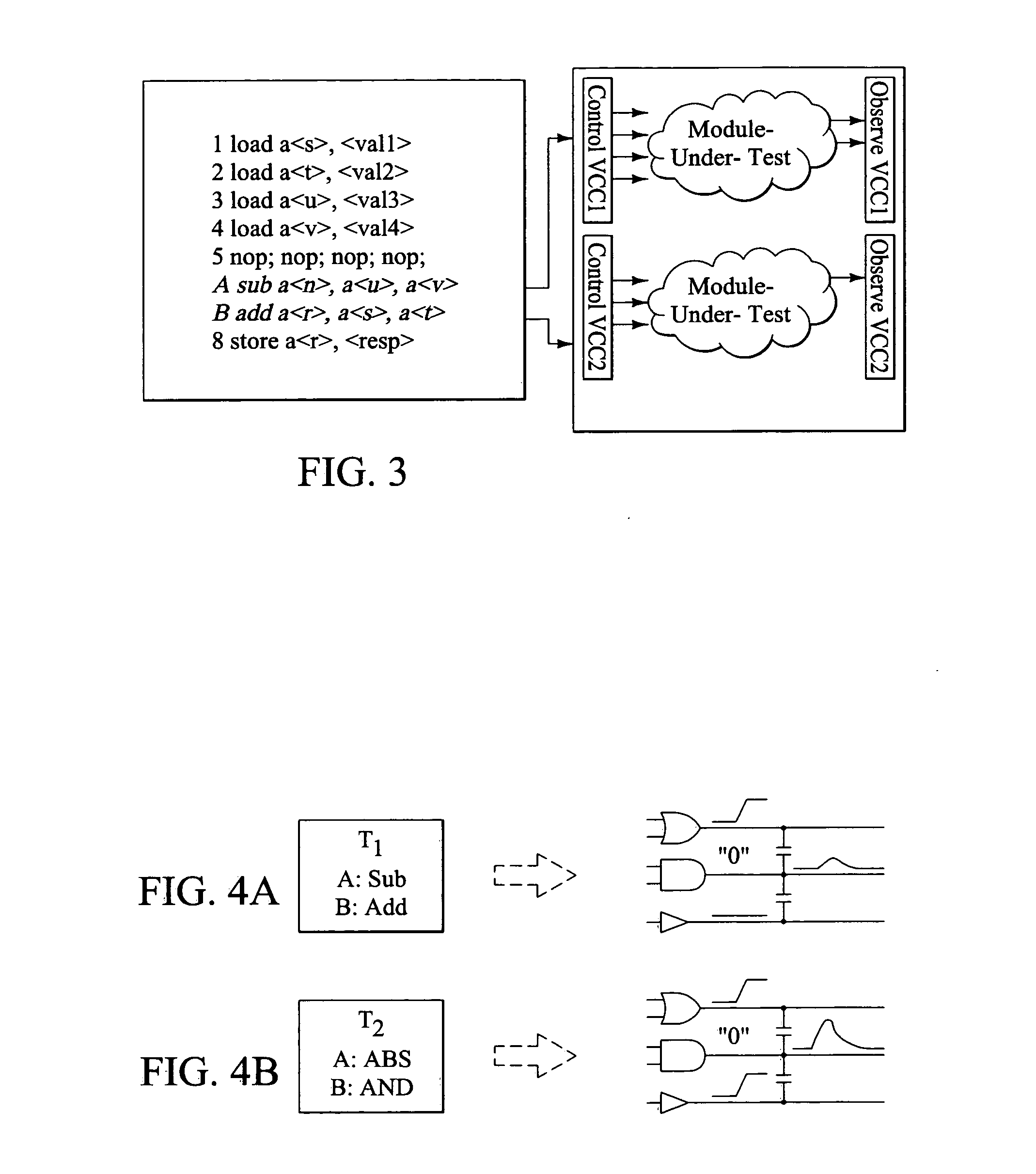Method for test application and test content generation for AC faults in integrated circuits
a technology of integrated circuits and content, applied in error detection/correction, measurement devices, instruments, etc., can solve the problems of functional errors in manufactured chips, high-performance chips being tested, and high cost and time consumption
- Summary
- Abstract
- Description
- Claims
- Application Information
AI Technical Summary
Problems solved by technology
Method used
Image
Examples
Embodiment Construction
[0049] The present invention is directed to a software-based self-test (SBST) method for testing AC fault models such as crosstalk faults, IR drop induced timing faults and path delay faults, in programmable integrated circuits such as microprocessors, micro-controllers, embedded processors, digital signal processors, etc. Different from testing for stuck-at faults, testing for AC faults (such as crosstalk faults) requires a sequence of test vectors delivered at the operational speed. SBST method applies tests in functional mode using instructions. Different instructions impose different controllability and observability constraints on a module-under-test (MUT). As a result, complexity of searching for an appropriate sequence of instructions and operands becomes prohibitively high. One embodiment of the present invention combines structural test generation technique with instruction-level constraints. A MUT is duplicated in several time frames, and augmented with Super Virtual Const...
PUM
 Login to View More
Login to View More Abstract
Description
Claims
Application Information
 Login to View More
Login to View More - R&D
- Intellectual Property
- Life Sciences
- Materials
- Tech Scout
- Unparalleled Data Quality
- Higher Quality Content
- 60% Fewer Hallucinations
Browse by: Latest US Patents, China's latest patents, Technical Efficacy Thesaurus, Application Domain, Technology Topic, Popular Technical Reports.
© 2025 PatSnap. All rights reserved.Legal|Privacy policy|Modern Slavery Act Transparency Statement|Sitemap|About US| Contact US: help@patsnap.com



